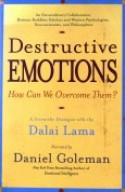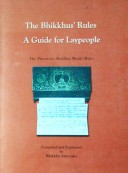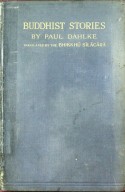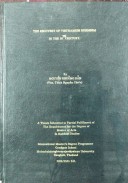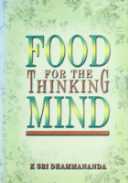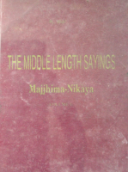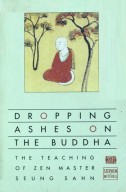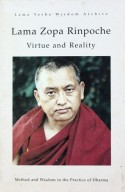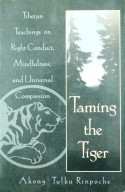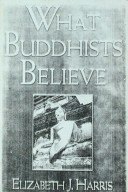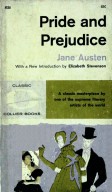Tìm Sách
Sách tiếng Anh-English >> Destructive Emotions
Thông tin tra cứu
- Tên sách : Destructive Emotions
- Tác giả : Dalai Lama & Daniel Goleman
- Dịch giả :
- Ngôn ngữ : Anh
- Số trang : 411
- Nhà xuất bản : Bantam Books New York
- Năm xuất bản : 2004
- Phân loại : Sách tiếng Anh-English
- MCB : 12010000006635
- OPAC :
- Tóm tắt :
THE DALAI LAMA
Foreword
Much human suffering stems from destructive emotions, as hatred breeds violence or craving fuels addiction. One of our most basic responsibilities as caring people is to alleviate the human costs of such Out-of control emotions. In that mission, I feel that Buddhism and science both have much to contribute.
Buddhism and science are not conflicting perspectives on the world, but rather differing approaches to the same end: seeking the truth. In Buddhist training, it is essential to investigate reality, and science offers its own ways to go about this investigation. While the purposes of science may differ from those of Buddhism, both ways of searching for truth expand our knowledge and understanding.
The dialogue between science and Buddhism is a two-way conversation. We Buddhists can make use of the findings of science to clarify our understanding of the world we live in. But scientists may also be able to utilize some insights from Buddhism. There are many fields in which Buddhism can contribute to scientific understanding, and the Mind and Life dialogues have focused on several.
For instance, when it comes to the workings of the mind, Buddhism has a centuries-old inner science that has been of practical interest to researchers in the cognitive and neurosciences and in the study of emotions, offering significant contributions to their understanding. Following our discussions, several scientists have gone away with new ideas for research in their fields.
On the other hand, Buddhism can learn from science as well. I have often said that if science proves facts that conflict with Buddhist understanding, Buddhism must change accordingly. We should always adopt a view that accords with the facts. If upon investigation we find that there is reason and proof for a point, then we should accept it. However, a clear distinction should be made between what is not foundby science and what is found to be nonexistent by science. What science finds to be nonexistent we should all accept as nonexistent, but what science merely does not find is a completely different matter. An example is consciousness itself. Although sentient beings, including humans, have experienced consciousness for centuries, we still do not know what consciousness actually is: its complete nature and how it functions.
In modern society, science has become a primary force in human and planetary development. In this way, scientific and technological innovations have been responsible for great material progress. However, science does not have all the answers, any more than religion did in the past. The more we pursue material improvement, ignoring the contentment that comes of inner growth, the faster ethical values will disappear from our communities. Then we will all experience unhappiness in the long run, for when there is no place for justice and honesty in people s hearts, the weak are the first to suffer. And the resentments resulting from such inequity ultimately affect everyone adversely.
With the ever-growing impact of science on our lives, religion and spirituality have a greater role to play in reminding us of our humanity. What we must do is balance scientific and material progress with the sense of responsibility that comes of inner development. That is why I believe this dialogue between religion and science is important, for from it may come developments that can be of great benefit to mankind.
When it comes to the human problems presented by our destructive emotions, Buddhism has much to say to science. A central aim of Buddhist practice is to reduce the power of destructive emotions in our lives. With that aim in mind, Buddhism offers a wide range of theoretical insights and practical methods. If any of these methods can be shown through scientific tests to be of benefit, then there is every reason to find ways to make them available to everyone, whether or not they are interested in Buddhism itself.
Such scientific assessment was one res.ult of our dialogue. I am glad to say that the Mind and Life discussion reported in this book was more than a meeting of minds between Buddhism and science. The scientists went a step beyond and have begun programs to test several Buddhist methods that may be of benefit to all in dealing with’ destructive emotions.
I invite readers of this book to share in our explorations of the causes and cures for destructive emotions, and to reflect on the many questions raised that have compelling importance for us all. I hope you will find this encounter between science and Buddhism as stimulating as I did.
August 28, 2002
CONTENTS
Foreword by His Holiness the Fourteenth Dalai Lama
Prologue: A Challenge for Humanity
A SCIENTIFIC COLLABORATION
- The Lama in the Lab
- A Natural Scientist
DAY ONE: WHAT ARE DESTRUCTIVE EMOTIONS?
- The Western Perspective
Presenters: Alan Wallace and Owen Flanagan
- A Buddhist Psychology
Presenter: Matthieu Ricard
- The Anatomy of Mental Afflictions
Presenters: Alan Wallace and Thupten Jinpa
- The Universality of Emotion
Presenter: Paul Ekman
- Cultivating Emotional Balance
Presenter: The Venerable Kusalacitto
DAY THREE: WINDOWS INTO THE BRAIN
- The Neuroscience of Emotion
Presenter: Richard Davidson
- Our Potential for Change
DAY FOUR: MASTERING EMOTIONAL SKILLS
- The Influence of Culture
Presenter: Jeanne Tsai
- Schooling for the Good Heart
Presenter: Mark Greenberg
- Encouraging Compassion
DAY FIVE: REASONS FOR OPTIMISM
- The Scientific Study of Consciousness
Presenter: Francisco Varela
- The Protean Brain
Presenter: Richard Davidson
Afterword: The Journey Continues
Notes
About the Participants
About the Mind and Life Institute
Acknowledgments
Index
 Facebook
Facebook
 Google
Google
 Google+
Google+
